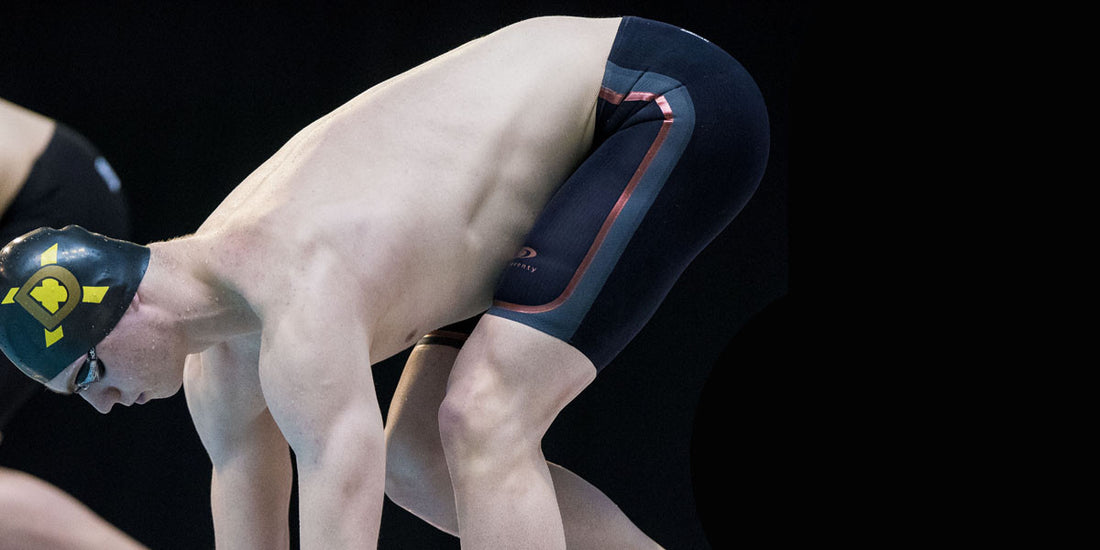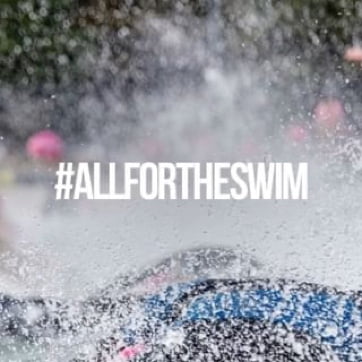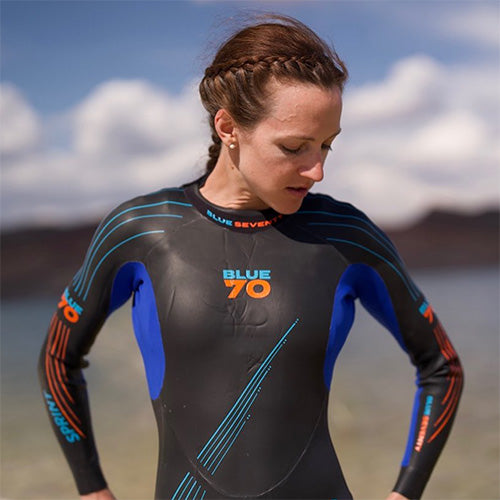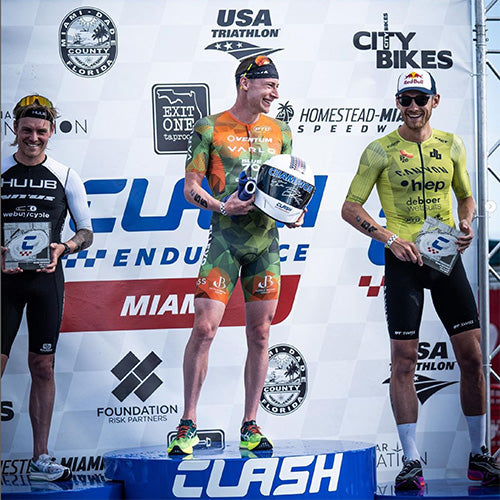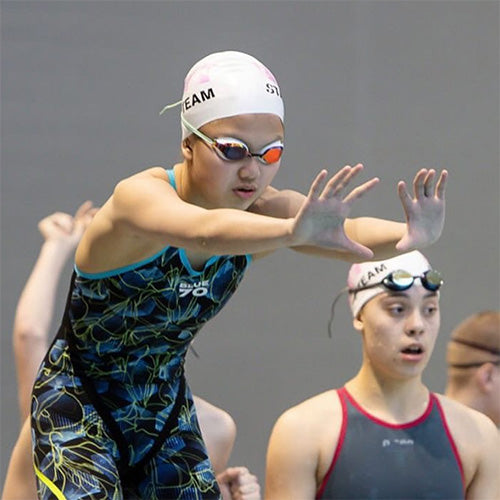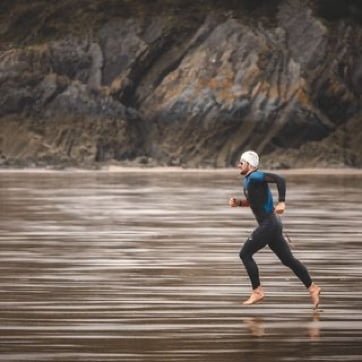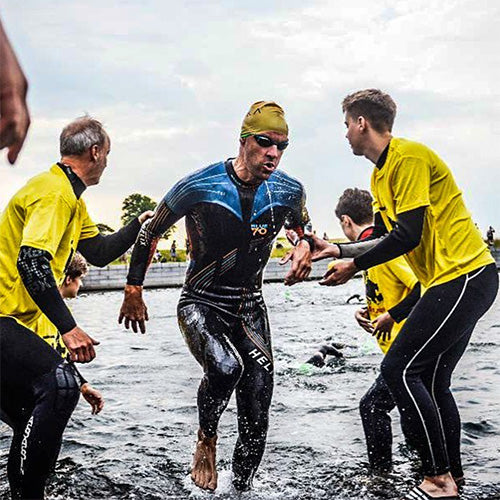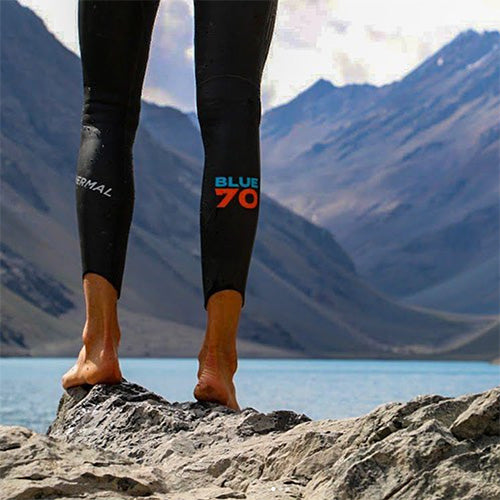When we started making competition pool suits in 2008, we didn’t set out to make another race suit. We wanted to apply our expertise in technical product design to build a race suit that was uniquely different and performed exceptionally well. Just like the nero comp rocked the world by introducing completely new fabrics to the pool, the all-new r10 competition suits follow in that tradition. It is built with some of the most advanced and compressive fabrics available, and introduces the double layering of fabrics that has not previously been legal for competition swimming.
 Data collecting at UCCS
Data collecting at UCCS
The start of development saw a trip to Colorado Springs, USA to meet up with a specialist Doctor of swimming biomechanics. We tested the performance of our current suits against the competition, and against some new fabrics, and the results were fascinating. We learned a lot more about how different fabrics perform at different speeds and how fit can affect body position and streamlining. The key take away: what works for an elite level swimmer is different to what works for an age group swimmer.
 The kneeskin design and fit evolved over many prototypes.
The kneeskin design and fit evolved over many prototypes.
Later in the project and with a selection of new prototypes in even more fabrics, we headed to Loughborough University in the UK to meet another swimming professor to test different shell and liner fabrics. There was plenty of trial and error in the process. For example, one textured liner, which we loved the look and feel of, and hoped would trap air to help make the swimmer more buoyant, actually had the effect of holding water between the fabric layers and was significantly slower. That prototype was discarded, and we moved on to the next one.
One of the lessons learned in Loughborough was the effect that suit design had on body position. In a push and glide test, most suits caused the swimmers’ legs to float to the surface while their heads pointed downward. The r10 design was the only suit tested that allowed for a more horizontal body position off the walls, which is better for streamlining. A swimmer equipped with the r10 will move forward and gradually upwards towards the surface, which allows for a more explosive break out stroke.
 The new jammer fit is higher at the back of the suit than any of our previous suits. This means it covers more of the gluteus muscles, which are big powerful muscles for swimming.
The new jammer fit is higher at the back of the suit than any of our previous suits. This means it covers more of the gluteus muscles, which are big powerful muscles for swimming.
The main front and back panels feature a fabric that glides incredibly well and features vertical flow lines. It’s the most compressive fabric we tested and the fit covers the major leg muscle groups used for swimming. The r10 is the first performance swimsuit to feature copper microfibers, giving it strength, and unique performance and recovery properties. This is a fabric that you will only find in the blueseventy r10.
 The r10 fitting is different to any suit before it and it's essential to get the fit right for maximum benefit.
The r10 fitting is different to any suit before it and it's essential to get the fit right for maximum benefit.
The r10 is constructed with a flexible side fabric to compliment the highly compressive copper fabric. This side panel helps ensure different shapes and sizes of swimmers can wear the r10. It’s this fabric that influences body position, especially the section that runs across the front of the leg. The reinforcement tape encourages streamlining. The initial versions didn’t have it, but when we added it, swimmers said that they felt like they were swimming on rails. It makes the suit stronger and more ridged. All seams are ultra-sonically welded to ensure the r10 is hydrodynamic.
Elite level swimmers will benefit the most from the r10. This is a suit to save for your big meets – your shave and taper occasions. When all those years of hard training find you behind the blocks and ready to make waves.
LEARN MORE: r10 Double Layered Compression
SHOP: Men's r10 Jammer | Women's r10 Kneeskin


